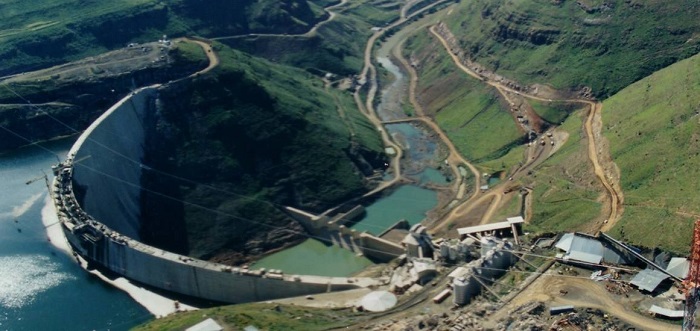Construction work at the Lesotho Highlands Water Project (LHWP) are in top gear despite a slow start in May due to Covid-19. Excavations continues from the outlets at about 6 m a day per tunnel at Polihali diversion tunnels.
The water project is being supported by the Kingdom of Lesotho and the Republic of South Africa.
Lesotho Highlands Development Authority Chief Executive Tente Tente says that excavation of the intake and outlet portals have been completed and work on the tunnels’ concrete lining is under way, with concrete casting and reinforcement having been started on tunnel one.
“Both tunnels’ intake and outlet portal drives have been supported with sprayed concrete and rock bolts and preparatory works for the concrete inlet structure also ongoing,” says Tente.
The tunnels (one 7 m in diameter and almost 1 km long; and the second, 9 m in diameter and also almost 1 km long) run parallel to each other from the intake point to the outlet downstream of the dam.
The tunnels are being excavated in advance of the construction of the Polihali dam to reduce the dam construction period. Impoundment of the Polihali reservoir is expected to start in 2024, with water delivery planned to start in 2027.
The Lesotho Highlands Water Project (LHWP) is a multi-phased, multi-billion Maloti/Rand project between the governments of the Kingdom of Lesotho and the Republic of South Africa.
It comprises water transfer and hydropower generation components with associated ancillary developments.
The water transfer component entails the construction of dams and tunnels in Lesotho, enhancing the use of water from the Senqu (Orange) River and its tributaries by storing, regulating, diverting and controlling the flow to effect the delivery of specified quantities of water to South Africa, and utilizing the delivery system to generate hydro-electric power in Lesotho.
The major works of Phase I included the construction of the Katse Dam, the transfer and delivery tunnels, ‘Muela Hydropower Plant and the Mohale Dam. The Phase II water transfer component comprises a dam at Polihali and a gravity tunnel that will connect the reservoir at Polihali with the Katse reservoir.
The further feasibility studies for the hydropower component of Phase II have concluded that conventional hydropower is the more feasible option to meet Lesotho’s energy needs.
The Lesotho Highlands Development Authority (LHDA) is the implementing and management authority of the Lesotho Highlands Water Project, on behalf of the government of Lesotho.
Also Read
Tanzania’s modern bus terminal Mbezi Luis set for completion
Ford Motor Company of Southern Africa goes solar

